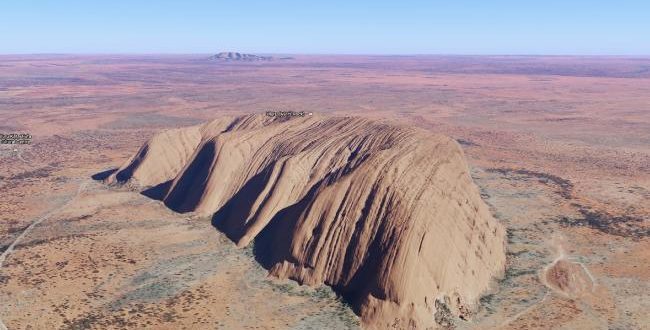Google Earth has put the world in your pocket since its launch in 2005, and now the software is broadening its horizons by bringing users closer to our planet than ever before.
The app was originally called EarthViewer 3D and was created by Keyhole, a Central Intelligence Agency-funded company bought by Google in 2004. And the company is definitely on to something — Google Earth has been downloaded more than a billion times, driving widespread interest in geospatial technologies and apps.
Google Earth version 9.0, available on Google’s Chrome browser, brings a new perspective to the three-dimensional mapping data of the virtual globe, allowing users to tilt the globe further than ever before.
Virtual New York appears as it might in a video game like Sim City, with surprising detail on the Statue of Liberty and the city’s skyscrapers.
Flat Earth-ers
Unfortunately for Australia, Google still seems to think our part of the Earth is flat. Gaze where the epic sandstone towers of the Sydney Harbour Bridge should be and all you’ll see is a flat slab of road and a shadow that hints at the structure’s three dimensional truth. Visit the 12 Apostles and you’d think erosion had already destroyed the landmark.
It’s not true for all of Australia, however. Melburnians will see their city in the correct proportions, and a visit to the Red Centre reveals just how unusual Uluru appears against the barren landscape surrounding it.
Flipping back to the previous version of Google Earth reveals just how much things have changed — there’s a slight 3D effect, but you can’t survey the true depth of the world, nor see intricate shapes of buildings and topography.
Feeling lucky?
It’s become all too easy to spend hours digitally adventuring, as Google has transformed Earth into a platform for fascinating educational content. In collaboration with external bodies such as the BBC, World Wildlife Fund and NASA, the new Voyager feature spins the globe to reveal interesting geographical and biological factoids.
The Planet Earth II collaboration takes you to the Galapagos to learn about the islands and the creatures that inhabit them, while David Attenborough’s Big Five Beasts of Africa sees the documentary legend recounting one of his most thrilling shoots and teaching us about African lions and elephants.
Contextualising the locations of these enthralling documentary excerpts is a hugely useful learning tool for children and adults alike.
Google has added a feature to Earth, an “I’m Feeling Lucky” button that transports you to a random destination somewhere around the world. In the space of three minutes I visited the Three Sisters in NSW, Cambodia’s Angkor Wat, and France’s Grand Arche de la Defense.
Future Earth
Shifting Google Earth to an educational and exploration platform is a smart move for Alphabet, Google’s parent company. In this relaunch, the company has already secured collaborative partners, and teased out new uses for the mapping data Google has invested so much in, but where it goes next is even more exciting.
It’s not hard to imagine new paid educational platforms on the service, or sponsored landing hubs in collaboration with daring brands. McDonald’s was quick to jump on the cultural capital of Pokemon Go, collaborating with Niantec to produce “pokestops” in the game.
Imagine a GoogleEarth.com/Maccas landing page that serves up some kind of geographical exploration game, a la “Where In the World is Carmen Sandiego”.
Considering the potential visual technologies like augmented reality and virtual reality can bring to Google Earth, the idea of shelling out cash to travel to an exotic location may seem a lot less appealing. Don a pair of Gear VR goggles and teleport yourself around like an omnipotent force. Who needs a trip to Bali when you can sip a beer and stare out at Kuta Beach from the comfort of your living room? It may sound dystopian but it could be where things are headed given the ongoing evolution of the technology.
The resolution of satellite image data might not yet be high enough to transmit us to every part of the globe, but combining the Earth Mapping data with that of Streetview gives Google unparalleled commercial access to the places in which people live today.
Human fascination with our planet is endless, making the content that Google is sitting on hugely valuable. This new version of Earth makes the content more accessible than ever — Alphabet’s next step is monetising it.
Google Earth Version 9 is available on Chrome on desktop, or Android devices.
Reader comments on this site are moderated before publication to promote lively and civil debate. We encourage your comments but submitting one does not guarantee publication. We publish hundreds of comments daily, and if a comment is rejected it is likely because it does not meet with our comment guidelines, which you can read here. No correspondence will be entered into if a comment is declined.





